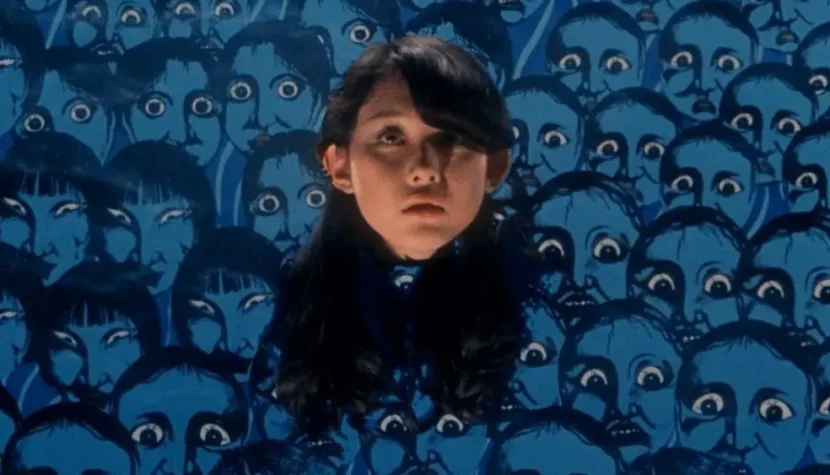HAUSU. A Japanese horror film as a one-of-a-kind experience

If I were to rate films on a scale of 1 to 10, I would give “Hausu” twelve question marks.
The teenage half-orphan Gorgeous plans to spend her summer vacation with her father, a film composer working in Europe. When it turns out her father has other plans, she accepts an invitation from her aunt, who lives alone in a large old mansion in rural Japan. Gorgeous brings along six of her school friends: the martial arts expert Kung Fu, the perpetually hungry Mac, the know-it-all Prof, the musically inclined Melody, the ethereal Sweet, and the dreamer Fantasy. After the girls arrive at the house, strange things begin to happen: the aunt disappears after entering the fridge, her white cat seems intentionally malicious, the piano and clock come to life, a ghost appears in the mirror, and household items start attacking the guests. Eventually, the girls find the diary of Gorgeous’s aunt, and reading it sheds new light on the enigmatic events occurring in the haunted house.

“Hausu” was born as an attempt by the Tokyo film studio Toho to capitalize on the success of Steven Spielberg’s “Jaws” (1975). The goal was to create a popular summer hit for young audiences in Japan. Toho assigned the task to Nobuhiko Ôbayashi, who turned to his teenage daughter for inspiration—thanks to Chigumi Ôbayashi, the film features sequences with a ghostly mirror and a watermelon resembling a severed head. Chigumi drew on her childhood fears, which her father shared with screenwriter Chiho Katsura, while also adding his own themes of Hiroshima and Nagasaki’s destruction by atomic bombs and an unfulfilled love story. The final screenplay had nothing to do with “Jaws”, but it was still approved by Toho. Ôbayashi was chosen as the director because no one else wanted to make the film.
Most of “Hausu”‘s cast were amateurs—only Kimiko Ikegami (Gorgeous) and Yōko Minamida (the aunt) had acting experience, while the other roles were given to models who had worked with Ôbayashi in commercials. The film also featured singer Kiyohiko Ozaki (Mr. Togo), writer Saho Sasazawa (the father), and Chigumi Ôbayashi (the girl in the shoemaker’s workshop). The inexperience of the teenage amateur actresses proved problematic, and Ôbayashi felt their performances were poor and unconvincing. To help them get into their roles, he played music on set by the Japanese rock band Godiego, who also composed the film’s soundtrack. Filming took nearly two months on one of Toho’s largest sound stages—without storyboards and with a technical crew convinced of the absurdity of the entire project.

Even before the first take, the studio invested in promotion: advertising cards, a manga, a radio drama, a novelized script, and a music album were created. It paid off: the film, which hit Japanese theaters in July 1977 as a double feature with Sôkichi Tomimoto’s drama “Dorodarake no junjô” (1977), was a commercial success, particularly popular with young audiences. While some Japanese critics gave the film negative reviews, it didn’t stop Ôbayashi from winning the Blue Ribbon Award for Best New Director in 1978, awarded by critics and writers. There was talk of making a sequel to “Hausu”, but Nobuhiko Ôbayashi ultimately decided that such a production should remain a one-time project. It’s easy to understand his reasoning after watching his feature-length debut.
“Hausu” is one of the most unique films in cinema history and continues to astonish. There are no clear reference points for this truly insane movie, just a mix of loose associations: Dario Argento’s “Suspiria” (1977), early Peter Jackson productions, Alejandro Jodorowsky’s work, John Waters’ films, surrealism, an acid trip, a 90-minute chewing gum commercial, and who knows what else. The film lasts an hour and a half, but so much happens in every second that it feels like it’s twice as long. It’s not about the plot—which is highly abstract—but about the extraordinary way it’s presented. Yet no words can do justice to Ôbayashi’s twisted imagination and bold vision—you have to see “Hausu” for yourself. Or rather, experience it, because watching this film goes far beyond the usual movie-watching experience.

